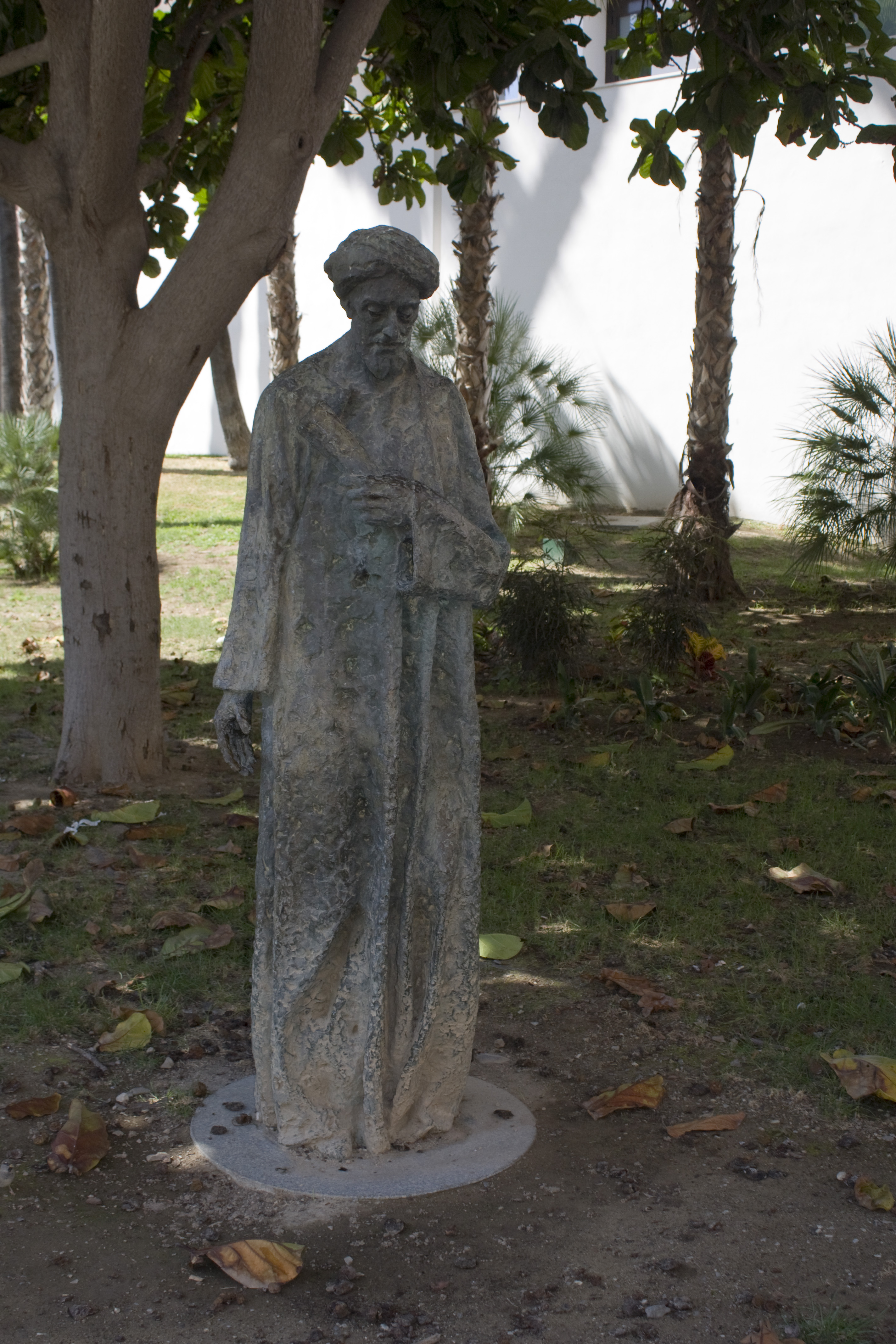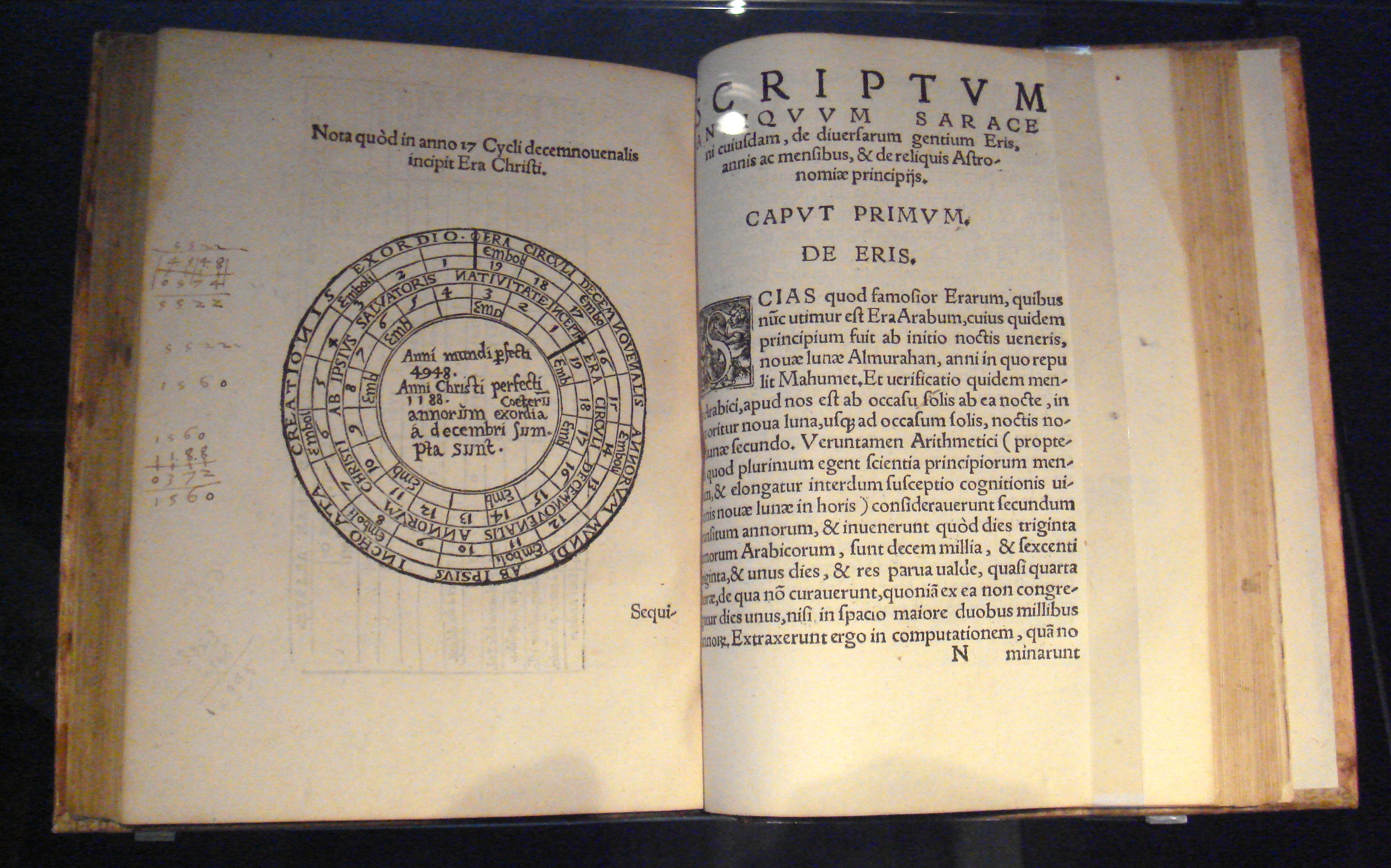|
Gundissalinus
Dominicus Gundissalinus, also known as Domingo Gundisalvi or Gundisalvo ( 1115 – post 1190), was a philosopher and translator of Arabic language, Arabic to Medieval Latin active in Toledo, Spain, Toledo. Among his translations, Gundissalinus worked on Avicenna's ''Liber de philosophia prima'' and ''De anima'', Solomon ibn Gabirol, Ibn Gabirol's ''Fons vitae'', and al-Ghazali's ''Summa theoricae philosophiae'', in collaboration with the Jewish philosopher Abraham ibn Daud, Abraham Ibn Daud and Johannes Hispanus. As a philosopher, Gundissalinus crucially contributed to the Latin assimilation of Arabic philosophy, being the first Latin thinker in receiving and developing doctrines, such as Avicenna's modal ontology or Solomon ibn Gabirol, Ibn Gabirol's universal hylomorphism, that would soon be integrated into the thirteenth-century philosophical debate. Life Born presumably in the Iberian Peninsula around 1115–1125, Gundissalinus received his education in Chartres, supposedly follo ... [...More Info...] [...Related Items...] OR: [Wikipedia] [Google] [Baidu] |
Toledo School Of Translators
The Toledo School of Translators ( es, Escuela de Traductores de Toledo) is the group of scholars who worked together in the city of Toledo during the 12th and 13th centuries, to translate many of the Judeo-Islamic philosophies and scientific works from Classical Arabic into Latin. The School went through two distinct periods separated by a transitional phase. The first was led by Archbishop Raymond of Toledo in the 12th century, who promoted the translation of philosophical and religious works, mainly from classical Arabic into Latin. Under King Alfonso X of Castile during the 13th century, the translators no longer worked with Latin as the final language, but translated into Old Spanish. This resulted in establishing the foundations of a first standard of the Spanish language, which eventually developed 2 varieties, one from Toledo and one from Seville. History Background Traditionally Toledo was a center of multilingual culture and had prior importance as a center of lear ... [...More Info...] [...Related Items...] OR: [Wikipedia] [Google] [Baidu] |
Johannes Hispanus
John of Seville (Latin: ''Johannes Hispalensis'' or ''Johannes Hispaniensis'') ( fl. 1133-53) was one of the main translators from Arabic into Castilian in partnership with Dominicus Gundissalinus during the early days of the Toledo School of Translators. John of Seville translated a litany of Arabic astrological works in addition to being credited with the production of several original works in Latin. Life and Context John of Seville was a baptized Jew, whose Jewish name (now unknown) has been corrupted into "Avendeut", "Avendehut", "Avendar" or "Aven Daud". This evolved into the middle name "David", so that, as a native of Toledo, he is frequently referred to as Johannes (David) Toletanus. However, Avendehut's translations typically translated Arabic text into Spanish vernacular. John of Seville was capable of translating Arabic directly into Latin, creating a distinction between himself and Avendehut. Some historians argue that in fact there were two different persons with a s ... [...More Info...] [...Related Items...] OR: [Wikipedia] [Google] [Baidu] |
Solomon Ibn Gabirol
Solomon ibn Gabirol or Solomon ben Judah ( he, ר׳ שְׁלֹמֹה בֶּן יְהוּדָה אִבְּן גָּבִּירוֹל, Shlomo Ben Yehuda ibn Gabirol, ; ar, أبو أيوب سليمان بن يحيى بن جبيرول, ’Abū ’Ayyūb Sulaymān bin Yaḥyá bin Jabīrūl, ) was an 11th-century Andalusian poet and Jewish philosopher in the Neo-Platonic tradition. He published over a hundred poems, as well as works of biblical exegesis, philosophy, ethics and satire. One source credits ibn Gabirol with creating a golem, possibly female, for household chores. In the 19th century it was discovered that medieval translators had Latinized Gabirol's name to Avicebron or Avencebrol and had translated his work on Jewish Neo-Platonic philosophy into a Latin form that had in the intervening centuries been highly regarded as a work of Islamic or Christian scholarship. As such, ibn Gabirol is well known in the history of philosophy for the doctrine that all things, including s ... [...More Info...] [...Related Items...] OR: [Wikipedia] [Google] [Baidu] |
Abraham Ibn Daud
Abraham ibn Daud ( he, אַבְרָהָם בֵּן דָּוִד הַלֵּוִי אִבְּן דָּאוּד; ar, ابراهيم بن داود) was a Spanish-Jewish astronomer, historian, and philosopher; born at Córdoba, Spain about 1110; died in Toledo, Spain, according to common report, a martyr about 1180. He is sometimes known by the abbreviation Rabad I or Ravad I. His mother belonged to a family famed for its learning. Some scholars believe he is the Arabic-into-Latin translator known as “Avendauth.” Works His chronicle, a work written in Hebrew in 1161 under the title of ''Sefer ha-Qabbalah'' (; some manuscripts give the title as ''Seder ha-Qabbalah'', i.e. the "Order of Tradition"), in which he fiercely attacked the contentions of Karaism and justified Rabbinic Judaism by the establishment of a chain of traditions from Moses to his own time, is replete with valuable general information, especially relating to the time of the Geonim and to the history of the Jews ... [...More Info...] [...Related Items...] OR: [Wikipedia] [Google] [Baidu] |
Arabic Language
Arabic (, ' ; , ' or ) is a Semitic language spoken primarily across the Arab world.Semitic languages: an international handbook / edited by Stefan Weninger; in collaboration with Geoffrey Khan, Michael P. Streck, Janet C. E.Watson; Walter de Gruyter GmbH & Co. KG, Berlin/Boston, 2011. Having emerged in the 1st century, it is named after the Arab people; the term "Arab" was initially used to describe those living in the Arabian Peninsula, as perceived by geographers from ancient Greece. Since the 7th century, Arabic has been characterized by diglossia, with an opposition between a standard prestige language—i.e., Literary Arabic: Modern Standard Arabic (MSA) or Classical Arabic—and diverse vernacular varieties, which serve as mother tongues. Colloquial dialects vary significantly from MSA, impeding mutual intelligibility. MSA is only acquired through formal education and is not spoken natively. It is the language of literature, official documents, and formal written m ... [...More Info...] [...Related Items...] OR: [Wikipedia] [Google] [Baidu] |
Cuéllar
Cuéllar () is a municipality in the Province of Segovia, within the autonomous community of Castile and León, Spain. The municipality had a population of 9,730 inhabitants according to the municipal register of inhabitants (INE) as of 1 January 2010, divided into 4,929 men and 4,801 women. Cuéllar is located on a hill and is 60 km northeast of the capital city of Segovia and 50 km south of Valladolid. It occupies an area of , and it is above sea level. The Cerquilla and Cega rivers flow through the town. To the north, the town borders the municipality of Bahabón (the province of Valladolid); to the south, it borders Sanchonuño; to the east is Frumales, and to the west are San Cristóbal de Cuéllar and Vallelado. Inhabitants of Cuéllar traditionally grow different crops (such as cereals, vegetables, chicory, legumes, and beets) and raise livestock, including pigs, sheep, and cows. Forestry and resin production were once important economic resources. History Medie ... [...More Info...] [...Related Items...] OR: [Wikipedia] [Google] [Baidu] |
12th-century Translators
1 (one, unit, unity) is a number representing a single or the only entity. 1 is also a numerical digit and represents a single unit of counting or measurement. For example, a line segment of ''unit length'' is a line segment of length 1. In conventions of sign where zero is considered neither positive nor negative, 1 is the first and smallest positive integer. It is also sometimes considered the first of the infinite sequence of natural numbers, followed by 2, although by other definitions 1 is the second natural number, following 0. The fundamental mathematical property of 1 is to be a multiplicative identity, meaning that any number multiplied by 1 equals the same number. Most if not all properties of 1 can be deduced from this. In advanced mathematics, a multiplicative identity is often denoted 1, even if it is not a number. 1 is by convention not considered a prime number; this was not universally accepted until the mid-20th century. Additionally, 1 is ... [...More Info...] [...Related Items...] OR: [Wikipedia] [Google] [Baidu] |
12th-century Spanish Philosophers
1 (one, unit, unity) is a number representing a single or the only entity. 1 is also a numerical digit and represents a single unit of counting or measurement. For example, a line segment of ''unit length'' is a line segment of length 1. In conventions of sign where zero is considered neither positive nor negative, 1 is the first and smallest positive integer. It is also sometimes considered the first of the infinite sequence of natural numbers, followed by 2, although by other definitions 1 is the second natural number, following 0. The fundamental mathematical property of 1 is to be a multiplicative identity, meaning that any number multiplied by 1 equals the same number. Most if not all properties of 1 can be deduced from this. In advanced mathematics, a multiplicative identity is often denoted 1, even if it is not a number. 1 is by convention not considered a prime number; this was not universally accepted until the mid-20th century. Additionally, 1 is the ... [...More Info...] [...Related Items...] OR: [Wikipedia] [Google] [Baidu] |
Philosophers Of Science
Philosophy of science is a branch of philosophy concerned with the foundations, methods, and implications of science. The central questions of this study concern what qualifies as science, the reliability of scientific theories, and the ultimate purpose of science. This discipline overlaps with metaphysics, ontology, and epistemology, for example, when it explores the relationship between science and truth. Philosophy of science focuses on metaphysical, epistemic and semantic aspects of science. Ethical issues such as bioethics and scientific misconduct are often considered ethics or science studies rather than the philosophy of science. There is no consensus among philosophers about many of the central problems concerned with the philosophy of science, including whether science can reveal the truth about unobservable things and whether scientific reasoning can be justified at all. In addition to these general questions about science as a whole, philosophers of science consi ... [...More Info...] [...Related Items...] OR: [Wikipedia] [Google] [Baidu] |
Latin Translations Of The 12th Century
Latin translations of the 12th century were spurred by a major search by European scholars for new learning unavailable in western Europe at the time; their search led them to areas of southern Europe, particularly in central Spain and Sicily, which recently had come under Christian rule following their reconquest in the late 11th century. These areas had been under Muslim rule for a considerable time, and still had substantial Arabic-speaking populations to support their search. The combination of this accumulated knowledge and the substantial numbers of Arabic-speaking scholars there made these areas intellectually attractive, as well as culturally and politically accessible to Latin scholars. A typical story is that of Gerard of Cremona (c. 1114–87), who is said to have made his way to Toledo, well after its reconquest by Christians in 1085, because he Many Christian theologians were highly suspicious of ancient philosophies and especially of the attempts to synthesize th ... [...More Info...] [...Related Items...] OR: [Wikipedia] [Google] [Baidu] |
Burgos
Burgos () is a city in Spain located in the autonomous community of Castile and León. It is the capital and most populated municipality of the province of Burgos. Burgos is situated in the north of the Iberian Peninsula, on the confluence of the Arlanzón river tributaries, at the edge of the central plateau. The municipality has a population of about 180,000 inhabitants. The Camino de Santiago runs through Burgos. Founded in 884 by the second Count of Castile, Diego Rodríguez Porcelos, Burgos soon became the leading city of the embryonic County of Castile. The 11th century chieftain Rodrigo Díaz de Vivar (''El Cid'') had connections with the city: born near Burgos, he was raised and educated there. In a long-lasting decline from the 17th century, Burgos became the headquarters of the Francoist proto-government (1936-1939) following the start of the Spanish Civil War. Declared in 1964 as Pole of Industrial Promotion and in 1969 as Pole of Industrial Development, the city h ... [...More Info...] [...Related Items...] OR: [Wikipedia] [Google] [Baidu] |

.jpg)





